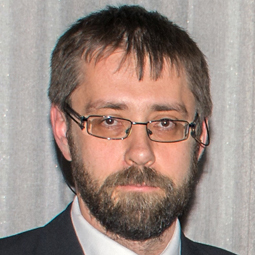Television Whitespaces - a new and innovative way to connect people
CSIR experts, Dr Albert Lysko and Prof Luzango Mfupe recently participated in a South African Institute of Electrical Engineers (SAIEE) webinar to discuss the organisation’s research and innovation in Television Whitespaces (TVWS). The webinar, based on an article published in the SAIEE official magazine Watt Now was co-authored by CSIR Next Gen Enterprises and Institutions experts including Executive Manager Prof Fulufhelo Nelwamondo.
CSIR experts, Dr Albert Lysko and Prof Luzango Mfupe recently participated in a South African Institute of Electrical Engineers (SAIEE) webinar to discuss the organisation’s research and innovation in Television Whitespaces (TVWS). The webinar, based on an article published in the SAIEE official magazine Watt Now was co-authored by CSIR Next Gen Enterprises and Institutions experts including Executive Manager Prof Fulufhelo Nelwamondo.
The CSIR has been working on research, development and innovation (RD&I) in the field of dynamic spectrum access and spectrum management since 2009. This RD&I work has been taking place together with research addressing the cost to communicate and lack of broadband access in underserviced and rural communities, as well as hard-to-reach areas. This innovation recently won the CSIR a prestigious National Science and Technology Forum (NSTF) – South32 award.
TVWS refers to portions of unused radio frequency spectrum; the gaps left between frequency band 470 MHz – 694 MHz allocated for television broadcasting, excluding the radio astronomy sub-band 606 MHz – 614 MHz.
During the webinar, Albert spoke on experimental TVWS and quantified associated advantages and constraints of the technology. He also touched on techno-economics of TVWS, and spoke about CSIR's experiences derived from experimental research in TVWS. This included providing measured and estimated samples of performances in various conditions, important features related to the practical use of TVWS communication equipment and other CSIR's experiences.
"TVWS is an optimum choice for providing telecommunications for between 12.5% to 41% of South Africans and is excellent for use in rural areas. In enabling rural telecom infrastructure, TVWS offers many advantages over other means for communication, including relatively low loss when propagating through trees/vegetation and plenty of bandwidth available in rural areas."
Luzango presented on the technical model and development of the CSIR’s geolocation spectrum database technology, South African TVWS regulatory framework and how to initiate TVWS in SA. He also presented the timeline of TVWS developments, overviewed the supporting ecosystem (policy, technical regulations, recommendations and standards), detailed on important aspects of regulations and described white space device's type approval process. He also discussed the roles of the Independent Communications Authority of South Africa (ICASA) reference GLSD and CSIR secondary GLSD as well as the ongoing CSIR support to the small, medium and micro enterprises (SMMEs) deploying TVWS networks to combat the Covid-19 pandemic, TVWS network pre-commercial trials, the TVWS value chain and opportunities available for SMMEs in TVWS.
"South African regulator, ICASA has designated the CSIR's GLSD as an interim national database to manage TVWS spectrum. The CSIR GLSD now enables a new TVWS-based telecom industry in South Africa, with researchers and regulators in other African countries and private companies in South Africa showing keen interest in adopting CSIR GLSD and several related technologies," he said.
Industry and SMMEs can benefit from the CSIR’s TVWS technology offerings in a number of ways, such as accessing the S-GLSD for real-time TVWS channel availability and management of TVWS network(s), compliance assessment of whitespace devices with respect to the secondary GLSD connectivity for ICASA type approval and accessing the TVWS network-planning tool.
For more information:


